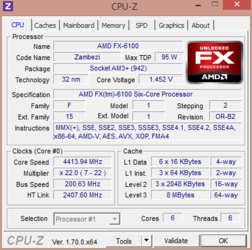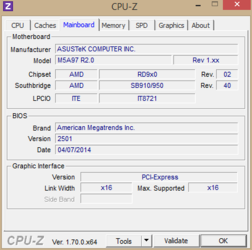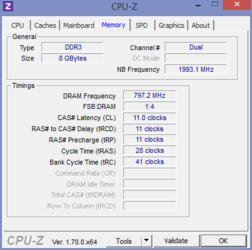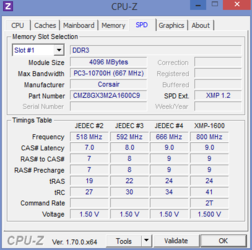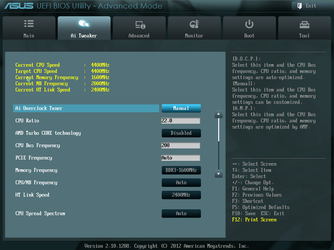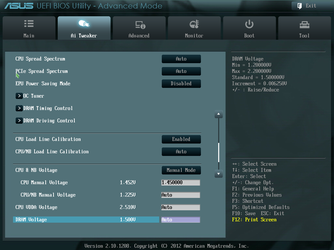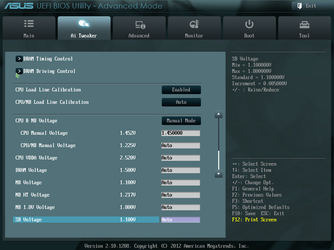- Joined
- Oct 5, 2014
I am very new to overclocking. So I need to also make sure that what I am doing is correct. I need to learn more.
My specs:
CPU: AMD FX 6100 (Still experimenting with stable OC)
Mobo: ASUS M5A97 R2.0
Cooler: Corsair H80i
I'm currently running Prime95 Small FFTs at the time of writing this. My OC configurations are:
Frequency: 4.4GHz (22.0 X 200MHz)
VCore: 1.452V
I have CPU Load Line Calibration enabled. CPU-Z gives me 1.476V reading when Prime95 is running. It seems that Cool n Quiet and C1E are automatically disabled for me when I turned the voltage control to manual mode from offset mode. I let C6 still enabled. (Should I disable it too?)
I wanna tell a little of my story today. First, I tried OC'd to 4.5 GHz @ 1.44V, ran Prime95 after some minutes, Windows crashed with an error I forgot what it was, but it was not "clock watchdog timeout". Upped my VCore to 1.452V after that, ran Prime95 after a few minutes, Core #5 and #6 stopped working because of "maximum number of warnings exceeded". Error: Illegal Sumout. So I downclocked my CPU to 4.4GHz at the same VCore of 1.452V. This is my current configuration. After, 1 hour and 29 minutes of Prime95, Core #6 stopped working because of the same error. The same run is still running at the time of writing this, it is now close to 3 hours and all the other 5 cores are still running fine.
My questions are:
Am I in the right track right now? Is there anything wrong?
Errors in Prime95 are usually caused by wrong VCore isn't it?
Any suggestions for a noob like me?
Also, share your configurations. Give me helpful tips.
My specs:
CPU: AMD FX 6100 (Still experimenting with stable OC)
Mobo: ASUS M5A97 R2.0
Cooler: Corsair H80i
I'm currently running Prime95 Small FFTs at the time of writing this. My OC configurations are:
Frequency: 4.4GHz (22.0 X 200MHz)
VCore: 1.452V
I have CPU Load Line Calibration enabled. CPU-Z gives me 1.476V reading when Prime95 is running. It seems that Cool n Quiet and C1E are automatically disabled for me when I turned the voltage control to manual mode from offset mode. I let C6 still enabled. (Should I disable it too?)
I wanna tell a little of my story today. First, I tried OC'd to 4.5 GHz @ 1.44V, ran Prime95 after some minutes, Windows crashed with an error I forgot what it was, but it was not "clock watchdog timeout". Upped my VCore to 1.452V after that, ran Prime95 after a few minutes, Core #5 and #6 stopped working because of "maximum number of warnings exceeded". Error: Illegal Sumout. So I downclocked my CPU to 4.4GHz at the same VCore of 1.452V. This is my current configuration. After, 1 hour and 29 minutes of Prime95, Core #6 stopped working because of the same error. The same run is still running at the time of writing this, it is now close to 3 hours and all the other 5 cores are still running fine.
My questions are:
Am I in the right track right now? Is there anything wrong?
Errors in Prime95 are usually caused by wrong VCore isn't it?
Any suggestions for a noob like me?
Also, share your configurations. Give me helpful tips.
Last edited:
